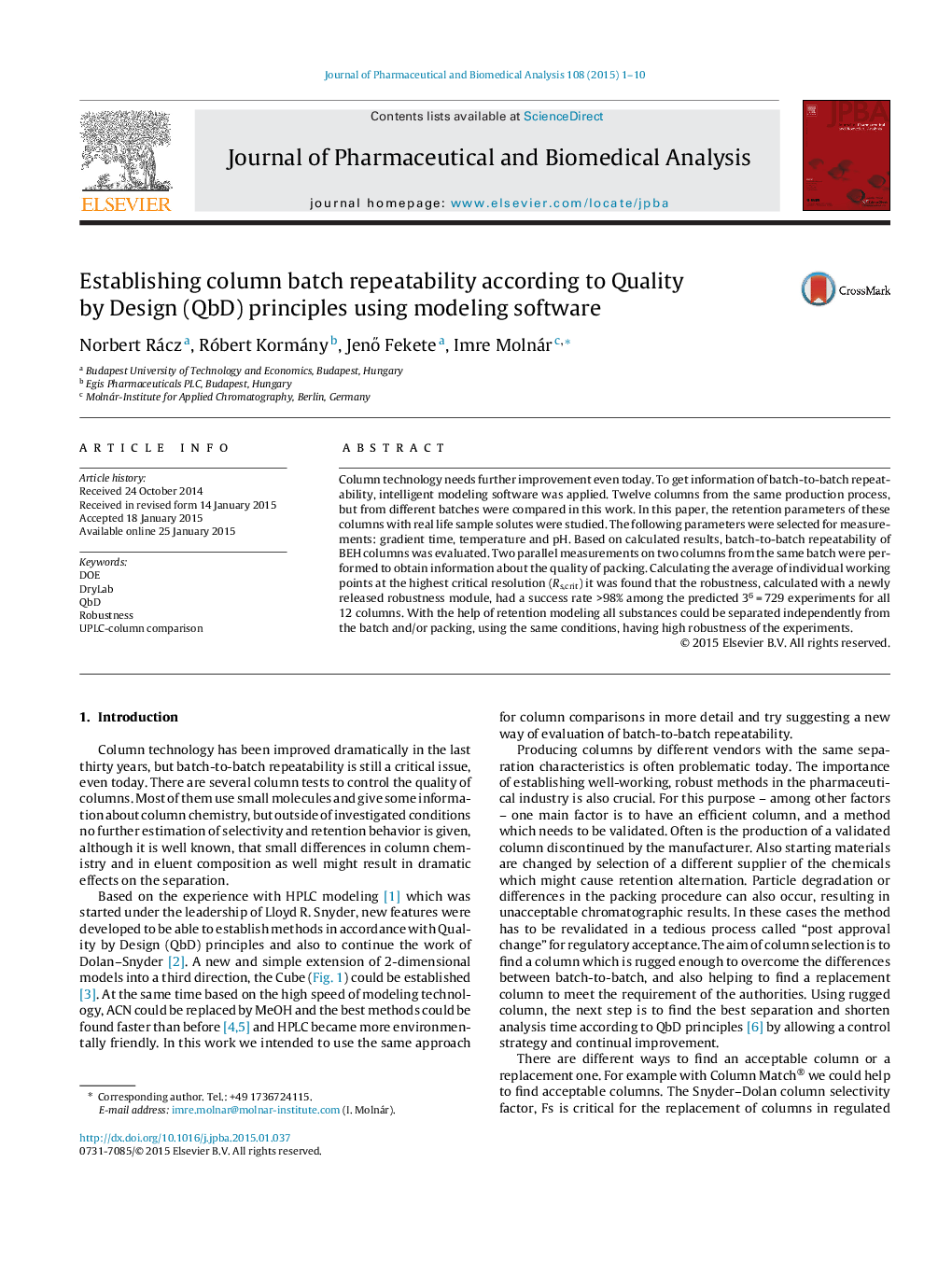| کد مقاله | کد نشریه | سال انتشار | مقاله انگلیسی | نسخه تمام متن |
|---|---|---|---|---|
| 1220886 | 1494627 | 2015 | 10 صفحه PDF | دانلود رایگان |

• Twelve columns from the same brand name, but different batches were compared.
• 3D design of experiment was used for comparing column selectivity and performance.
• 3D resolution space allows establishing better method robustness before validation.
• A multivariable design space (MODR) allows flexible routine work with columns.
• This procedure allows easy column replacement to retain method robustness.
Column technology needs further improvement even today. To get information of batch-to-batch repeatability, intelligent modeling software was applied. Twelve columns from the same production process, but from different batches were compared in this work. In this paper, the retention parameters of these columns with real life sample solutes were studied. The following parameters were selected for measurements: gradient time, temperature and pH. Based on calculated results, batch-to-batch repeatability of BEH columns was evaluated. Two parallel measurements on two columns from the same batch were performed to obtain information about the quality of packing. Calculating the average of individual working points at the highest critical resolution (Rs,crit) it was found that the robustness, calculated with a newly released robustness module, had a success rate >98% among the predicted 36 = 729 experiments for all 12 columns. With the help of retention modeling all substances could be separated independently from the batch and/or packing, using the same conditions, having high robustness of the experiments.
Figure optionsDownload as PowerPoint slide
Journal: Journal of Pharmaceutical and Biomedical Analysis - Volume 108, 10 April 2015, Pages 1–10